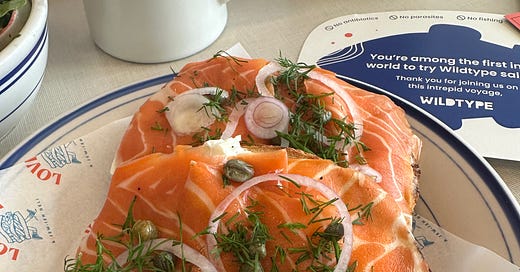Hope for cultivated meat?
What I talk about when I talk about which cultivated fish startup got the green light from the FDA, what major grocery distributor was hacked and the new butter made in a beaker.
Hello and welcome to Technically Food, my newsletter about how technology is changing the food we eat. I’m making up for all the weeks I took off so today I’m dropping into your in box with some interesting news from the food-tech world. Next week, I’ll write about the food scene in China. Ultra-processed? Yep. 7-11’s around every curve? That too. Inter…
Keep reading with a 7-day free trial
Subscribe to Technically Food to keep reading this post and get 7 days of free access to the full post archives.


